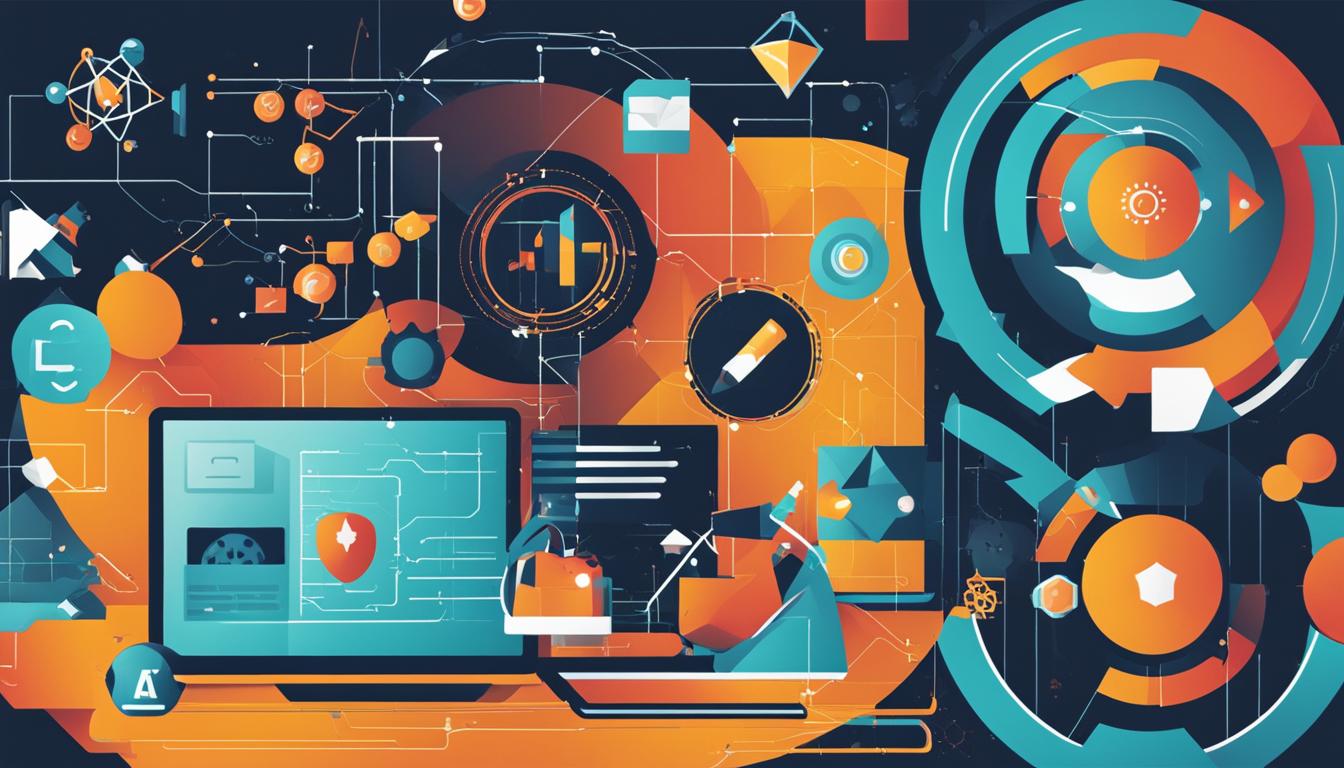Artificial Intelligence (AI) and Deep Learning are two terms that are often used interchangeably, but they have distinct differences. AI refers to the concept of creating intelligent machines that can think and act like humans. It involves imparting data, information, and human intelligence to machines. On the other hand, Deep Learning is a subset of Machine Learning, which is a subset of AI. Deep Learning uses complex algorithms and large volumes of data to train models and make predictions. While both AI and Deep Learning are technologies that aim to mimic human intelligence, they differ in their approaches and methods.
Key Takeaways:
- AI focuses on creating intelligent machines that can mimic human behavior and solve problems.
- Deep Learning is a subset of Machine Learning that uses neural networks to learn from vast amounts of data.
- AI and Deep Learning differ in their approaches and methods.
- AI and Deep Learning have various applications in industries such as machine translation, self-driving vehicles, and speech recognition.
- Understanding the differences between AI and Deep Learning is crucial for anyone looking to delve into the world of artificial intelligence.
What is Artificial Intelligence?
Artificial Intelligence, commonly referred to as AI, involves developing self-reliant machines that can think and act like humans. It simulates natural intelligence and can solve complex problems by mimicking human behavior and learning from data. For example, Amazon Echo is an AI-driven product that uses the virtual assistant AI technology called Alexa. Alexa can understand voice commands, play music, set alarms, and provide real-time information like news and weather reports. AI has various applications such as machine translation, self-driving vehicles, AI robots, and speech recognition.
Applications of Artificial Intelligence:
- Machine translation
- Self-driving vehicles
- AI robots
- Speech recognition
Artificial Intelligence is a rapidly evolving field that holds great potential for transforming industries and improving our daily lives. It continues to push the boundaries of what machines can achieve, making advancements in areas such as natural language processing, computer vision, and decision-making. As AI technology continues to advance, we can expect to see more innovative applications and breakthroughs that will shape the future.
Key features of Artificial Intelligence:
| Features | Description |
|---|---|
| Simulates human intelligence | AI aims to replicate human thinking and problem-solving capabilities. |
| Learning from data | AI systems gather and analyze data to improve their performance over time. |
| Adaptability | AI can adapt and learn from new situations, making it flexible and efficient. |
| Automation | AI can automate repetitive tasks, increasing productivity and efficiency. |
As AI technology continues to advance, it is important to understand its capabilities and potential impact on society. By harnessing the power of AI, we have the opportunity to solve complex problems, improve decision-making processes, and create innovative solutions that can benefit individuals, businesses, and the global community as a whole.
What is Machine Learning?
Machine Learning is a discipline within the field of Artificial Intelligence that focuses on building predictive models using algorithms and analytics. It involves training machines to learn from data and make decisions or predictions without explicit programming. Machine Learning algorithms analyze large volumes of data to find patterns and make informed decisions.
There are different types of Machine Learning techniques, each with its own set of algorithms and methodologies:
- Supervised Learning: In this approach, the machine is trained with labeled data, where the desired output is known. The algorithm learns to make predictions by finding patterns in the data.
- Unsupervised Learning: This technique involves training the machine with unlabeled data, where the desired output is unknown. The algorithm discovers patterns and relationships in the data without any predefined categories.
- Reinforcement Learning: This approach involves training the machine to interact with its environment and learn from the feedback it receives. The algorithm learns through trial and error and seeks to maximize a reward or minimize a penalty.
Machine Learning has a wide range of applications across various industries, including healthcare, finance, marketing, and more. It is used for tasks such as image and speech recognition, natural language processing, fraud detection, and recommendation systems.
| Machine Learning Algorithms | Use Cases |
|---|---|
| Decision Trees | Classification and regression problems |
| Random Forests | Ensemble learning, prediction, and classification |
| Support Vector Machines (SVM) | Pattern recognition and classification |
| Neural Networks | Deep Learning, pattern recognition, and image analysis |
| K-Nearest Neighbors (KNN) | Classification and regression analysis |
The choice of a specific Machine Learning algorithm depends on the problem at hand, the type of data, and the desired outcome. By leveraging Machine Learning, businesses can gain valuable insights, make data-driven decisions, and drive innovation in their respective industries.

What is Deep Learning?
Deep Learning is a subset of Machine Learning that focuses on artificial neural networks and mimics the learning process of the human brain. Its algorithms work with large volumes of structured and unstructured data to make complex correlations and predictions. Unlike traditional Machine Learning approaches that rely on manual feature extraction, Deep Learning utilizes neural networks to automatically learn abstract representations of the data.
Deep Learning has played a crucial role in various technological advancements, such as self-driving cars, chatbots, and personal assistants like Alexa and Siri. By leveraging its ability to uncover non-linear correlations within big data, Deep Learning offers scalability and transformative potential across industries.
Advantages of Deep Learning:
- Non-linear correlations: Deep Learning models can capture complex relationships between data points, enabling more accurate predictions and insights.
- Scalability with big data: Deep Learning algorithms can efficiently process and analyze massive amounts of data, extracting valuable patterns that may not be easily discernible by traditional methods.

Application examples of Deep Learning:
| Industry | Deep Learning Application |
|---|---|
| Healthcare | Medical image analysis, disease diagnosis, drug discovery |
| Finance | Fraud detection, risk assessment, algorithmic trading |
| Manufacturing | Quality control, predictive maintenance, supply chain optimization |
| Retail | Personalized recommendations, demand forecasting, inventory management |
Deep Learning continues to push the boundaries of AI and Machine Learning, enabling machines to process vast amounts of data and make increasingly accurate predictions. As researchers and technologists delve deeper into the potential of Deep Learning, the applications and advancements in this field are poised to reshape industries and enhance numerous aspects of our lives.
Conclusion
In conclusion, understanding the differences between AI and Deep Learning is crucial for anyone looking to explore the world of artificial intelligence. While both technologies aim to replicate human intelligence, they differ in their approaches and methods.
AI focuses on creating intelligent machines that can mimic human behavior and solve complex problems. It involves imparting data, information, and human intelligence to machines. On the other hand, Deep Learning is a subset of Machine Learning that uses neural networks to learn from vast amounts of data. It eliminates the need for manual feature extraction and allows for non-linear correlations and scalability with big data.
By grasping the distinctions between AI and Deep Learning, one can better appreciate their applications and potential in various industries. From machine translation to self-driving vehicles, AI and Deep Learning have revolutionized technology and continue to push boundaries. So, whether you’re an aspiring data scientist, a tech enthusiast, or a business owner looking to leverage these technologies, understanding the differences between AI and Deep Learning is essential.
FAQ
What is the difference between AI and Deep Learning?
AI refers to the concept of creating intelligent machines that can think and act like humans, while Deep Learning is a subset of Machine Learning that focuses on artificial neural networks and mimics the learning process of the human brain.
What is Artificial Intelligence?
Artificial Intelligence involves developing self-reliant machines that can think and act like humans by simulating natural intelligence and learning from data.
What is Machine Learning?
Machine Learning is a discipline of computer science that uses algorithms and analytics to build predictive models by training machines to learn from data and make decisions or predictions without being explicitly programmed.
What is Deep Learning?
Deep Learning is a subset of Machine Learning that focuses on artificial neural networks and uses large volumes of structured and unstructured data to make complex correlations and predictions, eliminating the need for manual feature extraction.
 Skip to main content
Skip to main content


